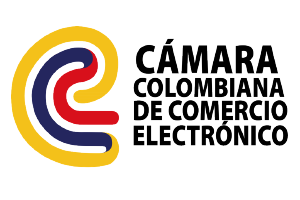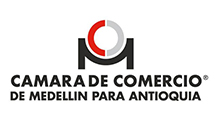Prior to the enactment of Law 1455 of 2011, international trademark registration in Colombia was governed by the Paris Convention of 1883, a treaty administered by the World Intellectual Property Organization (WIPO). This system basically required that the businessman who wanted to protect his trademark in another country had to go from country to country making the registration; this implied different legal procedures, the handling of several languages and currencies, among other issues, which generated an increase in costs. The above scenario changed with the Protocol Relating to the Madrid Agreement Concerning the International Registration of Marks administered by WIPO, which was approved by Law 1455 of 2011 and entered into force on August 29, 2012.
Since 2012, Colombia has been able to use the Madrid system to register trademarks in territories that have ratified the aforementioned treaty. According to information on WIPO’s official website, the Madrid Union currently has 106 members and covers 122 countries. Members include the United States and the European Union.
Who can file an international trademark application in Colombia?
Article 2 of the Protocol expressly states two basic requirements to apply for an international registration: the first is that the applicant must previously have a trademark application or registration in Colombia (basic application or basic registration respectively); the second is that the applicant must have: Colombian nationality, domicile in Colombia or have a real and effective industrial or commercial establishment in Colombian territory.
To whom is the application submitted?
Articles 2 and 3 of the Protocol prescribe that the applicant must file an application for international trademark registration directly with the national trademark office or office of origin, in the Colombian case it would be with the Superintendence of Industry and Commerce (SIC). The SIC is responsible for “receiving, certifying and sending applications to the International Bureau of the World Intellectual Property Organization”.[Circular única de la SIC título X capítulo 6° artículo 6.1.1.]
In which language is the application submitted?
The application documents filed with the SIC must be submitted in Spanish, except for those that are not in Spanish. declarations of intent The declaration shall be filed in the language required by some designated contracting parties in the international application, in which case it shall be filed in the language required by that contracting party; for example, the United States of America requires such a declaration and it must be filed in English. Other designated contracting parties requiring this document are: Brunei Darussalam, India, Ireland, Lesotho, Malaysia, Malawi, Mozambique, New Zealand, Singapore and the United Kingdom.
How do I apply? How much does international registration cost?
The international trademark application must be filed directly at the SIC office “on paper, typed using the official MM2 form provided by the International Bureau of the World Intellectual Property Organization (WIPO). on its Web site. Likewise, the list of requirements for the filing of the application is established in Article 3 of the Protocol and Rule 9 of the Common Regulations under the Madrid Agreement Concerning the International Registration of Marks.
On the other hand, according to Article 3° of the protocol, the applicant must pay a transmission fee to the SIC established in Resolution No. 47754 of 2012 (the amount is established in Colombian pesos). The foregoing is without prejudice to the provisions of Article 8 of the Protocol with respect to the international fee that the applicant must pay directly to the ONPI in Swiss francs. In addition, this rule gives the option to any contracting party to declare that, in respect of each international registration and renewal, it wishes to receive, instead of a percentage of a supplementary fee and of the complementary fees, an individual denominated fee to be determined in Swiss francs.
In accordance with the WIPO’s official website, Some of the members that opted to receive an individual fee in their declaration are: Brazil, Canada, China, Colombia, Denmark, Finland, Iceland, India, Ireland, Israel, Italy, Japan, United States of America, African Intellectual Property Organization (OAPI), United Kingdom, Sweden, Switzerland, among others. In addition, WIPO offers an online service where the applicant can calculate the required fees in Swiss francs according to the information he/she enters.
Does the procedure need to be done through an attorney?
Pursuant to articles 2 and 3 of the Protocol and the SIC Single Circular, the international registration of trademarks does not require an attorney; however, rule 3.1 of the Common Regulations under the Madrid Agreement Concerning the International Registration of Marks indicates that the applicant or holder may have only one representative before the International Bureau; his appointment may be made in the international application for registration or in a subsequent request. It is worth mentioning that a law firm is considered as a single agent.


How long does the registration process take?
If the application for registration complies with the requirements set forth in paragraph 6.1.4 of Chapter Six of Title X of the Sole Circular, the SIC will sign, certify and send the application to WIPO. In case of any disagreement or missing documentation, the SIC will require the applicant to complete the information as soon as possible. This is because, according to Article 3.4 of the Protocol, “if the international application is not received by WIPO within two (2) months from its filing date with the SIC, the resulting international registration date shall not be the international registration date but the date on which the international application was received by the International Bureau”. Click here.
In case the applicant does not correct or complete the application within the term established in article 17 of the Code of Administrative Procedure, the SIC will consider the application for international trademark registration withdrawn, without prejudice to the possibility of filing a new application in the future.
However, in accordance with Article 3 of the Protocol, if the international office studies the trademark application and considers that it meets all the requirements, it shall register the mark and publish it in the WIPO Official Gazette of International Trademarks, The applicant shall also send a certificate to the trademark applicant who shall be referred to as the “holder of the international trademark registration”. In addition, it shall notify the offices of the contracting parties designated by the applicant in the international application so that they may study the grant or refusal of trademark protection in their territory.
It is important to clarify that “the application for registration of an international trademark has the same effects as an application for registration of a trademark made in each of the countries designated by the applicant, this implies that each designated country reserves its right to grant or deny protection of a trademark”. Consult us. This means that, even if WIPO carries out the international registration, the countries designated by the applicant may refuse to grant trademark protection under Article 5 of the Protocol. Notwithstanding the foregoing, the same article 5, paragraph 6, establishes the right of defense of the holder of the international registration with respect to the communication of refusal of protection of the trademark.
In accordance with the above, Article 5.2 of the Protocol sets forth the time limit for the designated contracting party to grant or refuse trademark protection. As a general rule, the rule establishes a term of one year as from the date on which WIPO notified the application for trademark protection to said office. However, the rule provides that any contracting party may declare that the one-year period shall be replaced by 18 months. Some of the countries that have accepted the 18-month deadline are: Australia, Brazil, Canada, China, Colombia, Cyprus, Denmark, European Union, India, Israel, Italy, Japan, Poland, Sweden, Switzerland, Thailand, United Kingdom, United States of America, among others. Finally, the Protocol also admits, in exceptional cases and subject to certain requirements established in Article 5, that the contracting parties may notify the refusal of trademark protection after 18 months.
What is the term of the registration?
Article 6 of the Protocol provides that the registration of a mark at the International Bureau is for ten years, with the possibility of renewal under the conditions set forth in Article 7.
If the basic application or registration of the national trademark is cancelled, abandoned or its protection expires as such, the international trademark registration is cancelled?
Article 6 of the Protocol establishes that, during the first five years, the registration of the international trademark is dependent on the basic application or registration of the national trademark. “This means that, if, during the first five (5) years of the life of the international registration, the basic application or registration is refused, renounced, cancelled or limited in whole or in part, the International Bureau shall cancel the international registration.” After 5 years, the international registration becomes independent from the trademark registration in Colombia.
Our lawyers are experts in international trademark registration and will be able to provide you with the help and advice you require, if you wish to know more about our services you can contact us through our website.



